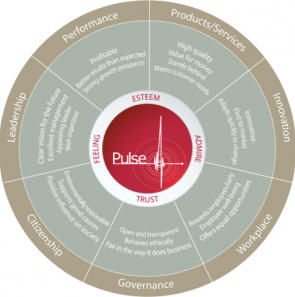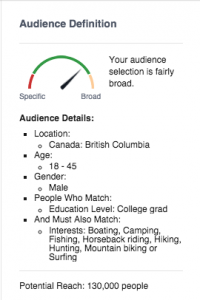The idea of showrooming as a major threat to brick-and-mortar retailers seems to be fading. Recent research from PayPal suggests that shoppers in high-value verticals prefer researching online and then buying in the store. Other retailers such as Best Buy and Johnston & Murphy use sophisticated data-onboarding technologies to help bridge the gap between the online and in-store customer experience. Recent research
But retailers have good reason to be concerned, even if it isn’t the apocalyptic “end of business as we know it” concern that permeated the retail world in 2013–2014. According to a recent survey conducted by SecureNet, as many as 72% of brick-and-mortar shoppers regularly use mobile devices to research products in-store. (Another survey put the number at 83% for shoppers of electronics.)

Three ways to respond.
There are three basic approaches to showrooming. You can play defense, offense, or both. This fascinating case study from the Harvard Business Review neatly summarizes the difference between the three choices. It takes place in a hypothetical board room, where various stakeholders of the electronics retailer Benjy’s are figuring out what to do about showrooming.
“’I think it’s obvious that we need to play both offense and defense. Offense should include providing more-aggressive discounts through the Benjy’s app and matching online prices. We also need to get more suppliers to impose minimum advertised prices on their online retailers, so that there’s a floor price for every product, online or off.
“’But there are ways to thwart object-recognition software,’ Ben continued. ‘We create display structures within the stores that confuse the apps while still showing off the products. There are consulting firms that specialize in this. The costs are relatively minor and well worth it. Personally, I think this tactic is a no-brainer.’”
Most retailers would recognize that a program to thwart object-recognition software would be a short-term play that would likely further alienate shoppers. Indeed, the experts advised against such a move, and elaborated further:
“[…] All those in-store initiatives would need to be seamlessly integrated with an online strategy so that each experience complements the other. Customers shouldn’t think ‘Benjy’s online’ or ‘Benjy’s brick-and-mortar,’ but just ‘Benjy’s.’”
So what’s the best way to respond to showroomers?

1. Make it easy to pick up in-store.
A big part of Best Buy’s dramatic turnaround story is their investment into becoming a true omnichannel retailer. From a story in the MIT Technology Review:
“The idea in omnichannel is to reach customers wherever they are—in a store, online or via their phones—and use technology to turn costly physical stores into an advantage. One deceptively simple step Best Buy took was to add a ‘Store Pickup’ button to its online shop. It turns out many shoppers like to browse and pay online but prefer to actually pick up that TV themselves—they just had no way of doing that before.”

2. Reward your loyal shoppers.
Your frequent shoppers don’t care if your CRM has omnichannel capabilities—they just want to be recognized as loyal customers every time they shop with you—whether it’s online or in-store.
Premium apparel retailer Johnston & Murphy rewards its most loyal customers using both in-store and online data. When they shop in-store, they receive a personalized experience guided by their highly trained sales associates who can work with them to complete their look based on their past purchases and stated preferences.
For online shoppers, they deliver personalized hero images and navigation choices based on online and offline customer data. They even offer free two-day shipping standard to VIP customers, who were identified through in-store and online data. And they let eligible shoppers know about this perk in a dynamic way, with welcoming light boxes informing customers of the promotion. As we reported in our recent Ecommerce Quarterly report, the campaign has reduced bounce rate for that segment of website visitors by 19%.

3. Compete on experience.
Unless you’re in charge of marketing for a we-sell-everything retailer like Walmart, odds are you’ve accrued some domain-specific knowledge of your unique business. Use your customer knowledge to improve their experience online and in-store. A real-life satisfying in-store experience is something Amazon will never be able to provide, even with a locker in the back of a 7-Eleven.
The good folks at HBR implore us to design for empathic expertise:
Business & Finance Articles on Business 2 Community
“When a shopper uses a physical retail setting as a showroom, what are they looking for? A better look at the merchandise, and the benefits of touch and feel—but even more, for expertise that could guide their choice. You probably have a business you patronize for exactly this reason, whether it’s the boutique that knows what’s on trend, or the specialty grocer who can advise on preparation of a dish, or the wine seller who can recommend the right bottle to go with that meal. Backcountry.com and Zappos, for example, are excellent online retailers, but they haven’t displaced REI or the local shoe store, because people value that hands-on expertise. Especially when the purchase is something we really care about, we’re willing to pay extra for a trusted advisor helping us make the right choice.”
(90)







